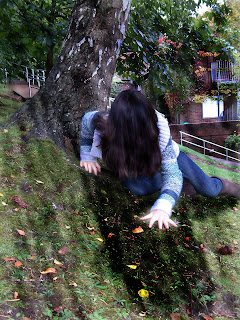There are three main features on a typical video camera.
- Zoom
- Focus
- Exposure
Zoom - Enables us to magnify a certain image through 'zooming'.
Focus - Helps us to see the image more clearly once we have zoomed in. It prevents a blurred shot.
Exposure - Allows us to control the quantity of light reaching the film.
On the screen of the video camera, you will be given information such as battery life and the exposure setting. The higher the exposure setting, the less light you are letting through. You are also told how many minutes are left on your memory stick and given a time code.
How to read a timecode
The timecode is found on the top right of the screen. It may read something similar to this
01:03:52:24
01: One hour03: three minutes
52: fifty-two seconds
24: Twenty-four framed shots per second
Through the timecode, we can establish the fact that we have recorded for one hour, three minutes, fifty-two seconds and we are currently on our twenty-fourth frame.
The video camera will take at least twenty-five shots per second. It is important that we know how many shots per second we are dealing with so as to be precise when editing our film.
White balance (Wht Bal)
This is the process of removing unrealistic color casts, so that objects which appear white in person are rendered white in your photo. The video camera has to take into account the "color temperature" of a light source, which refers to the warmth or coolness of white light.
Here are, for example, two pictures which portray different 'temperatures' and demonstrate the importance of white balance.
To fix the white balance we need to aim the video camera at a blank white wall so that it will then be able to pick up all the colors from the spectrum.
Signs and Symbols
STBY - Standby
REC - Record
Wht Bal - White Balance
F2.2 - An exposure of 2.2 (F5 - an exposure of five)
Dialogue before action
Before recording a piece of action it is important that we have set up the equipment correctly and that the director and crew are prepared. The actors also need to feel that they are in good hands and working with a professional crew.
Typical dialogue before recording could be
Director 'Standby'
Crew 'Standing by'
Director 'Roll the camera'
Crew 'Rolling'
Director 'Action'






